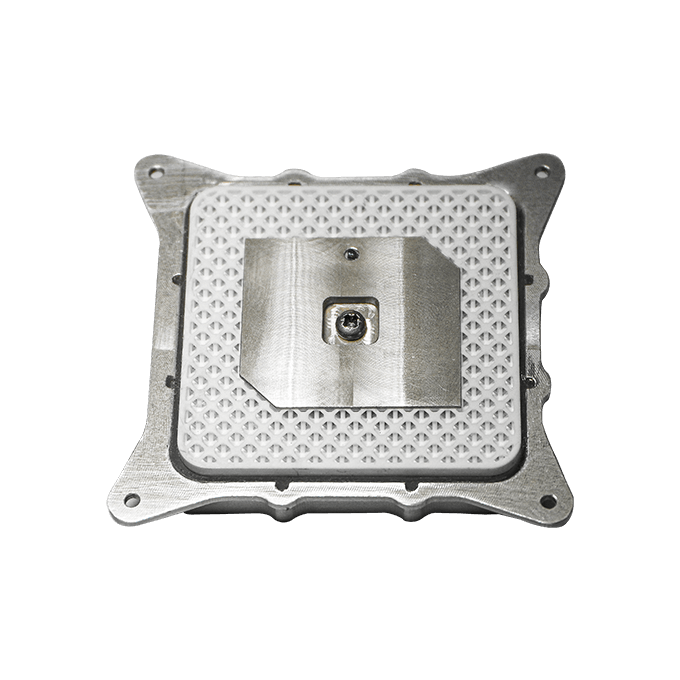Anywaves has called for additive manufacturing ceramic expert 3DCeram to explore all the manufacturing opportunities of a satellite antenna it had newly designed.
ANYWAVES is a French Space Agency (CNES) spin-off that develops antennas for the satellites constellations market. The company’s portfolio of antennas is used for applications such as telecommunications, navigation, Earth observation, atmospheric input to name a few of them.
Over the past few years, French company 3DCeram has been working hard to rethink its ceramic 3D printing business model, from manufacturing on-demand to the development of 3D printers. The company recently launched dedicated services to AM applications in the Space and Defense sectors.
As part of this project, Anywaves has worked with 3DCERAM’s 3D-Aim consultancy service. The Space startup has prototyped the GNSS L1/ E1 Band antenna that uses Zirconia material and improves a lattice structure so that it achieves the “best radiofrequency performances.”
The collaboration with 3DCeram helps the company decide which path it will follow for the production of the part. To support the space company in its decision process, 3DCeram opted for a three-step approach:
- A feasibility analysis that consists in exploring all technical and economical requirements. In this specific case, 3DCeram carried out a CAD analysis of several configurations of the part with different shapes. The CAD analysis is performed based on the 3D printing phase, the cleaning process as well as the debinding and sintering stages.
- The design to manufacturing step that follows includes new proposals of the CAD file; the ultimate goal being to reduce possible defects (scratch, failure ……) which can occur during the manufacturing process. First, the 3DCeram team focused on part orientation, which depends on the part tolerances and the target unit price. They also looked at the blend radius on the sharp edge or the maximal shape factor between two connected sections. Some iteration printing and firing tests were thereafter achieved to confirm the design maturity and part robustness.

- When the CAD file is ready for production, which is the last step of this approach,Anywavescan either choose to produce a series of several parts of this antenna that will directly be used in-situ or adapt its production for R&D projects.
Either way, the resulting antenna can withstand extreme environments without thermal protection thanks to “material selection and solder less feed system”.
Remember, you can post free of charge job opportunities in the AM Industry on 3D ADEPT Media or look for a job via our job board. Make sure to follow us on our social networks and subscribe to our weekly newsletter : Facebook, Twitter, LinkedIn & Instagram ! If you want to be featured in the next issue of our digital magazine or if you hear a story that needs to be heard, make sure to send it to contact@3dadept.com






